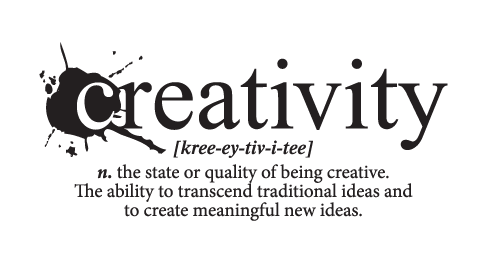Creativity and Language Learning
Medical Pharmaceutical Translations • Aug 12, 2013 12:00:00 AM

You can’t use up creativity. The more you use, the more you have. — Maya Angelou
Can learning a new language increase one’s creativity?
The idea of creativity is complex. According to “Human Motivation” by Robert Franken, creativity is defined as “the tendency to generate or recognize ideas, alternatives or possibilities that may be useful in solving problems, communicating with others or entertaining ourselves or others.” To be creative you need to see things from new perspectives and from this generate new possibilities.
Creativity results from two types of thinking: convergent (focused, attention driven thinking narrowing solutions down to one) and divergent (the opposite, open thinking that considers all possibilities). Cycling between these two processes results in creative solutions.
Much research has been dedicated to the correlation of bilingualism and creativity. Children and adults raised as bilinguals perform better on measures of divergent thinking than monolinguals.
The bilingual’s participation in two cultures influences the way they see the world through different cultural and social contexts changing representations in a bilingual’s brain. These new representations promote cognitive flexibility through creative ways of encoding.
Bilinguals develop strong convergent skills as well. Juggling two languages forces them to concentrate on the language currently in use and filter out interference from the language not being used at that moment.
So much of the bilingual advantage comes from cultural immersion. Can acquiring a second language where the interaction is in the student-teacher school environment versus being immersed in everyday bilingual cultural interactions have the same impact?
A 2012 study from the Ferdowsi University in Mashhad, entitled The Effects of Foreign Language Learning on Creativity says yes. Researchers found mastering a foreign language in a classroom context dramatically increases the four components of divergent thinking (fluency, elaboration, originality and flexibility).
The question is why? Could it be those willing to learn a foreign language already exhibit characteristics of adaptability and willingness to change – characteristics of divergent thinking. Were these people already prone to creativity?
Could it be the exposure to new cultures, customs and beliefs distinctive from their own force them to view the world from a new perspective boosting divergent thinking and creative expression?
Tolerance of ambiguity is another aspect of divergent thinking. Is it possible nuances in language structure and culture teach mental flexibility in the face of ambiguity?
In school environments, convergent thinking is prized. Educational systems with prescribed courses of material to cover, discourage divergent thinking. Language classes tend to be more non-conformist in nature and divergent thought-friendly. Is this a contributing factor?
Deciding whether these creative characteristics are brought on by the experience (as in bilingualism) or already existed to spur the experience of learning a new language is like trying to figure out which came first, the chicken or the egg.
The answer is, does it matter? Isn’t the creative boost and the ability to speak fluently in two languages, worth it?
Sherry Dineen
